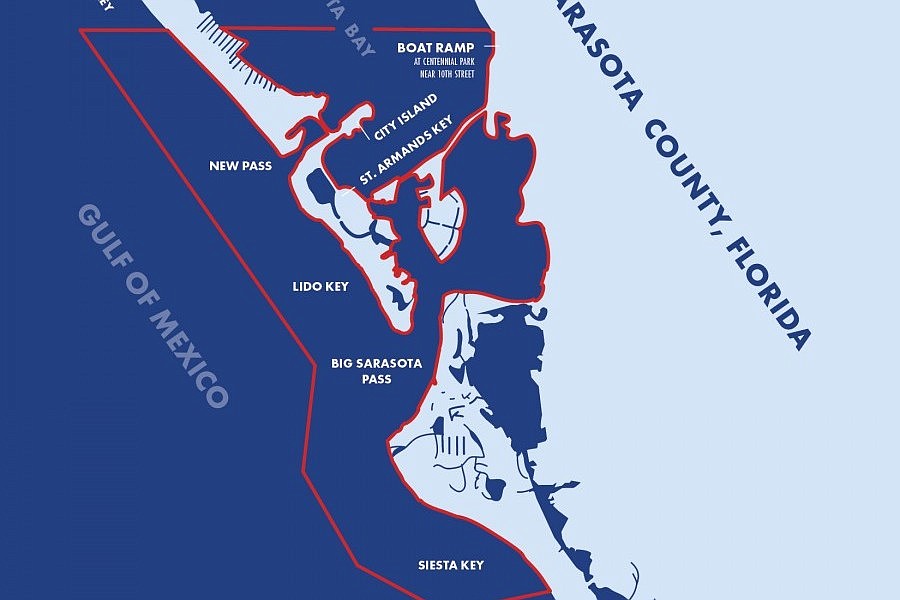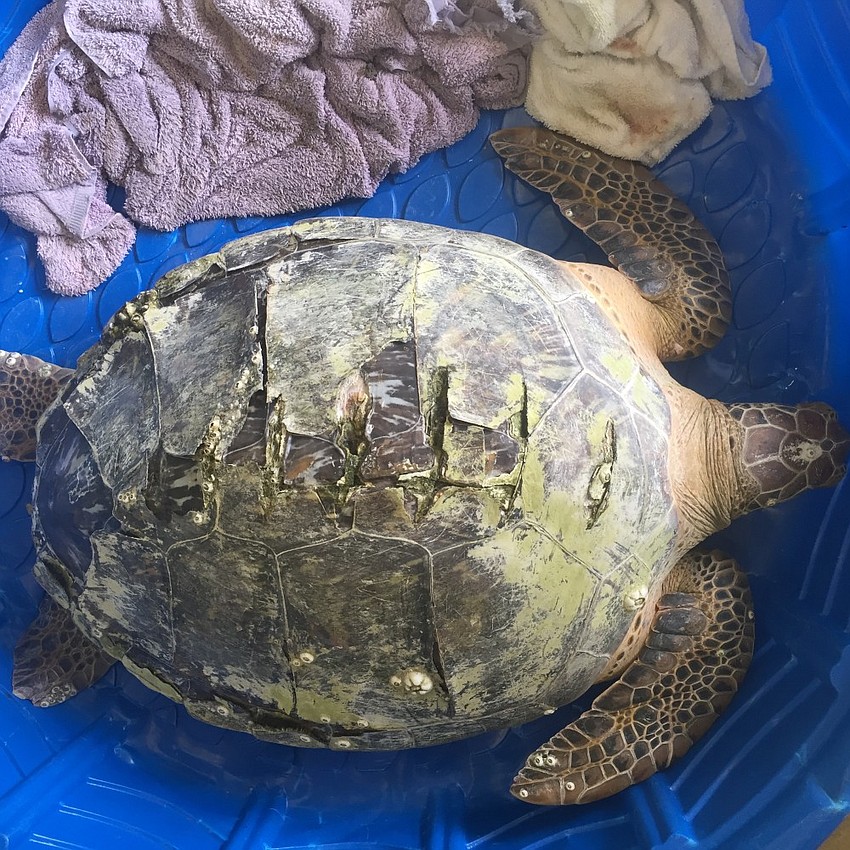- May 4, 2024
-
-
Loading

Loading

While boating around Sarasota Bay, Mote Marine Laboratory now advises boaters to “Go Slow for Those Below.”
A new voluntary Sea Turtle Protection Zone in Sarasota County aims to decrease the number of strandings and accidental boat injuries to sea turtles.
The zone is an extension of an existing initiative between Loggerhead Marinelife Center in Juno Beach and the Archie Carr Center for Sea Turtle Research in Palm Beach, which enacted its own zone in 2021.
“I really am hopeful that this will be very much a community partnership and that with all of us working together, we can effect change and do a little better by these guys,” said Gretchen Lovewell, Mote’s stranding investigations program manager.
The zone extends to 1.5 miles offshore and focuses on the sea turtle stranding hotspot areas that Mote has observed, including Longboat Pass, New Pass, Big Pass, Siesta Key and Venice Inlet.
If possible, boaters should avoid the zone. But if unavoidable, Mote advises slower speeds within the zone. Polarized sunglasses are also recommended because they can make it easier to spot sea turtles and other wildlife in the area.
“We’re visitors in their environment, so as any good visitor we want to do our best to take care of their home,” said Lovewell. “And that includes slowing down and looking out for them.”
Sea turtle strandings happen when a turtle is found dead or alive, washed ashore or floating. Over 90% of boat injuries to sea turtles are fatal, but can be avoided by being more vigilant, said Valerie Nicole Tovar, conservation manager at Loggerhead Marinelife Center.

Tovar said it was important to conduct field interviews with boaters to gauge their awareness of the issue and willingness to adapt. In interviews done before the first protection zone establishment, 42% of the subjects weren’t aware that interactions between boats and turtles were common, while 70% said they would be willing to slow down in voluntary protection zones.
Last year, the Archie Carr Center reached out to Mote and began talks to establish a zone in Sarasota County like the one in Palm Beach. Mote had well-established, robust data that made the lab a desirable partner.
Currently, Mote’s data on boat strikes and strandings is completely driven by public support. Mote monitors its hotline number 24/7 for people to report strandings. If possible, Mote recovers the turtle and brings it back to the necropsy lab, where researchers examine the cause of death. The first step in the process is a human interaction exam. Boat strikes leave obvious marks, said Lovewell.
Mote will compare its baseline boat strike and stranding data with data to be collected after the zone’s establishment. Along with that data, Mote's other important measure of success will be boat speeds.
Loggerhead Marinelife Center interns monitor boat speed in Palm Beach, said Tovar. The center posts interns on a boat about a half mile into the zone, where they use radar guns to record the speeds of passing boats. Mote will implement the same monitoring throughout the Sarasota zone.
Behavior change and results take years to develop, according to Tovar. But the best outcome Loggerhead Marinelife Center has seen from its zone since 2021 has been the response from outreach initiatives.
With the zones being voluntary, Tovar said there were initial concerns about the efficacy of the program. Through outreach programming and working with the community, Tovar said the outreach grassroots initiative has had an “overwhelmingly good reaction” from the boating community. Mote hopes to partner with local rental boat companies in the near future to promote the program. Lovewell said this is especially important since many boaters in the area may be from out of town and unfamiliar with the potential interactions with sea turtles.
Loggerhead Marinelife Center has received a lot of constructive and positive feedback thanks to outreach events and interviews with boaters in the Palm Beach area, said Tovar.
“One of the biggest things we’ve always wanted to do is to work with the boating community and not work against them,” Tovar said. “We understand that collaboration is really the only way to get things done.”
Sea turtles are important parts of ecosystems and can be environmental indicators, Tovar said. The species are important to ecosystems like seagrass beds and coral reefs, contributing to each food web. Sea turtles’ health also is representative of the health of the surrounding environment, according to Tovar.
“As Floridians, we should be doing our job to protect them,” she said.